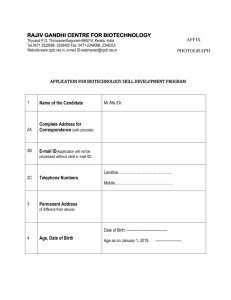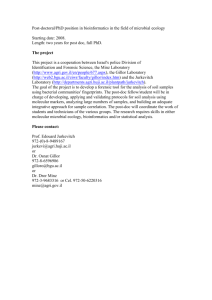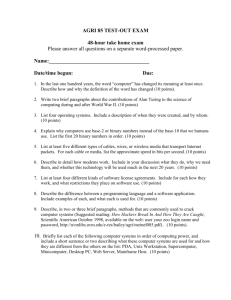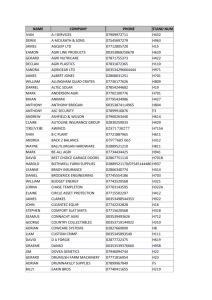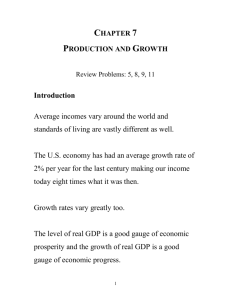Country Methodology - Geographically based Economic data (G
advertisement
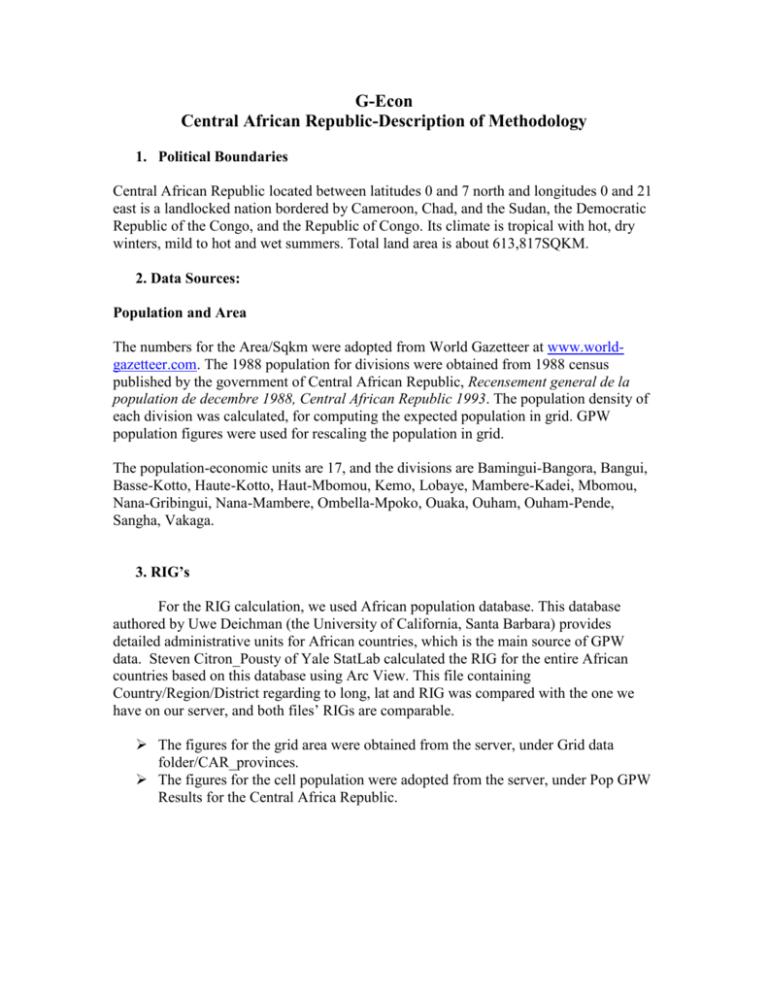
G-Econ Central African Republic-Description of Methodology 1. Political Boundaries Central African Republic located between latitudes 0 and 7 north and longitudes 0 and 21 east is a landlocked nation bordered by Cameroon, Chad, and the Sudan, the Democratic Republic of the Congo, and the Republic of Congo. Its climate is tropical with hot, dry winters, mild to hot and wet summers. Total land area is about 613,817SQKM. 2. Data Sources: Population and Area The numbers for the Area/Sqkm were adopted from World Gazetteer at www.worldgazetteer.com. The 1988 population for divisions were obtained from 1988 census published by the government of Central African Republic, Recensement general de la population de decembre 1988, Central African Republic 1993. The population density of each division was calculated, for computing the expected population in grid. GPW population figures were used for rescaling the population in grid. The population-economic units are 17, and the divisions are Bamingui-Bangora, Bangui, Basse-Kotto, Haute-Kotto, Haut-Mbomou, Kemo, Lobaye, Mambere-Kadei, Mbomou, Nana-Gribingui, Nana-Mambere, Ombella-Mpoko, Ouaka, Ouham, Ouham-Pende, Sangha, Vakaga. 3. RIG’s For the RIG calculation, we used African population database. This database authored by Uwe Deichman (the University of California, Santa Barbara) provides detailed administrative units for African countries, which is the main source of GPW data. Steven Citron_Pousty of Yale StatLab calculated the RIG for the entire African countries based on this database using Arc View. This file containing Country/Region/District regarding to long, lat and RIG was compared with the one we have on our server, and both files’ RIGs are comparable. The figures for the grid area were obtained from the server, under Grid data folder/CAR_provinces. The figures for the cell population were adopted from the server, under Pop GPW Results for the Central Africa Republic. GDP Same as the population, the per capita figures refer to 1988, which was fit to US constant GDP (constant 1995 US$), 1990. Methodology: GDP rural urban technique output: For the Central African Republic GDP output, we first located the urban-rural population numbers for each division. Numbers were based on 1988 Census. From these numbers we calculated agriculture and non agriculture labor force by using the formula: Rural labor force=[Rural pop in district A * Rural labor force participation rate] where Rural part. Rate = Labor force/Total Pop Urban labor force=[Urban pop in district A * Urban labor force participation rate] where Urban part. Rate = Labor force/Total Pop Then we obtained the agricultural and nonagricultural labor force for each district/division by using matrices formula: Agri labor force in district A = [rural labor force * 0.9(rural in agri) + urban labor force * 0.4(urban in agri) Nonagri labor force in district A =[rural labor force in A *0.1(rural in nonagri) + urban labor force*0.6(urban in nonagri) The calculation on worker productivity was also undertaken where we calculated the worker output in both agri and non agri sectors by using the formula: Agri output per worker = National value in agri/Agri labor force Nonagri output per worker = National value in nonagri/nonagri labor force In order to get the agri and non agri GDP output in district A, We used the formula that Agri output in district A =[Agri labor force in district A * output per worker in agri] Nonagri output in district A =[Nonagri labor force in district A * output per worker in nonagri] Then, by adding up the agri and nonagri output numbers gave us the GDP output of the Central African Republic. Numbers obtained by this formula should match up those cited by the World Bank Development indicators. GDP Cell output: We have division data on population, density and per capita. First the grid area figures were converted into square kilometers using 1 square mile=2.59 square kilometers. Then, the sub cell population was computed using the formula [RIG*Grid area*Population density], and rescaled the resulting sub cell population to fit the GPW population. Sub cell GDP was calculated using the formula [sub cell GDP=[income per capita*1990 sub cell population], where income per capita = [total GDP/population], and aggregated the sub cell values to the cell level using autosum command in Excel. Finally, cell GDP was rescaled to fit the 1990 World Bank GDP (Constant 1995 US $). 4. Summary: Geographical units for rescaling economic data Geographical units for economic data Geographical units for GPW population Grid Cells Prepared By: Mukhtar H. Mohamed Date: January 18, 2005 Data File Name: Central Africa_Calc_MM_051905 Upload File Name: Central Africa_Upload_MM_051905 268 17 176 71

